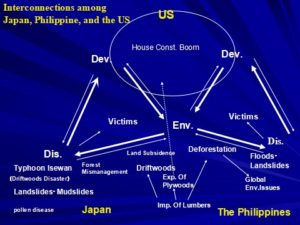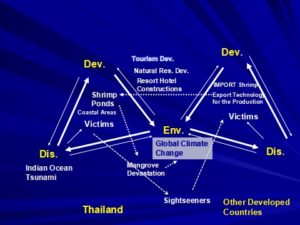As mentioned before in Day_56, it is clear the model, development-environment-disaster cycle model is an analyzer that can be considered in a wide range of areas. In other words, this analysis perspective raises the sociological position of natural disasters, and the stepping stone of their historical and geographical connections become clearer. We believe that it will even be possible to provide various perspectives to prevent it from being guided.
https://disasterresearchnotes.site/archives/2598
Analytical Viewing Angle by Causal Cycle Model: Case of Isewan Typhoon Disaster and Indian Ocean Tsunami Disaster
In this section, Isewan typhoon disaster and Indian Ocean tsunami disaster are specifically analyzed using the analysis view angle, the causal cycle model of development, environment, and disaster. The first is the Isewan Typhoon that hit Nagoya on September 26, 1959. The disaster was a turning point of disaster management in postwar Japan, but focusing on driftwood damage, which is one of the important aspects of the disaster, the economic recovery of postwar Japan, trade with the United States, and Japan. Forest management, natural disasters such as landslides, the problem of hay fever, which is also called national illness, and the inter-relationship between deforestation and natural disasters in the Philippines, which becomes today, will become clear. Second, regarding the Indian Ocean Tsunami that caused enormous damage on December 26, 2004, mainly in the countries around the Indian Ocean, the damage in Thailand will be analyzed. This analysis reveals the development-environment-disaster in Thailand and its relationship with Japan and Western countries.
The figures are shown as follows:

Figure 1: Interconnections of Typhoon Isewan Disaster

Figure 2: Interconnections of Indian Ocean Tsunami Disasters in Thailand
sponsored link





